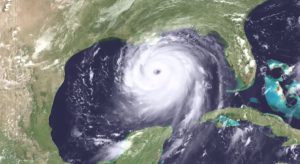Always Ready
As the east coast was hit with a Nor’easter and the west coast was hit with a ferocious storm last week, we are reminded that difficulties and obstacles can arise at any time. Our most recent issue of Global Business Travel Magazine highlighted the importance of travel risk management covering everything from kidnapped executives and traveling through danger zones to natural disasters like the ash cloud. In the magazine, I shared my experiences as the Director of Travel Services for Dominion Resources during some historical major storms – Hurricane Isabel and Hurricane Katrina – and talked about what I learned from these when it comes to emergency response and risk management. I would like to share those experiences with you here as well.
A special thanks to the GBTA Risk Committee who also contributed to the Magazine’s Risk Issue (check back next week for their expert advice on duty-of-care best practices) and to all Travel Managers who place an emphasis on the safety and security of their workforce in their programs.
On September 18, 2003, Isabel made landfall in eastern North Carolina as a Category 2 hurricane. It will be remembered not for its intensity but for its size and its broad impact on some of the most populated areas on the East Coast. When it hit land, Isabel was the size of the state of Colorado. At the time, it was one of the costliest, deadliest, and strongest hurricanes ever to hit the United States. It had wind gusts of more than 100 miles an hour, toppled hundreds of thousands of trees, and ultimately caused $5 billion worth of damage throughout the Mid-Atlantic region. I have worked as the Director of Travel Services for Dominion Resources, one of the nation’s leading energy companies, based in Virginia, for more than 27 years. Isabel wasn’t my first hurricane nor would it be my last. The weather service had predicted the storm about a week before it hit land, and people prepared the best they could. Still, more than 1.8 million of Dominion’s 2.2 million electric distribution customers—that’s 82 percent of our electric customers—were left without power. In some rural areas, entire counties were in darkness.
Getting things back to normal was a huge undertaking. We needed to mobilize all of our own crews and call on mutual aid from other utilities. My team and I initially coordinated the aerial support to assess the extent of the damage. Then we needed to find appropriate lodging space for the more than 12,000 contractors and mutual aid workers involved in post-hurricane cleanup efforts. We booked about 4,500 rooms per night—more than 75,000 room nights over a period of two weeks. Given the intense demand for hotel rooms (FEMA officials, Red Cross workers, and insurance company representatives were also coming to the area), the reality was that many hotels’ power and phone service were out, which made finding rooms extremely difficult. Needing over 3,000 rooms the first weekend, my team had to be resourceful and innovative. We were prepared to use non-traditional shelters, such as schools and armories, and track down the necessary supplies to make people in those facilities as functional and comfortable as possible.
I cannot overstate the importance of having a corporate travel risk plan in place for an event such as Isabel. Our pre-planning allowed us to be nimble and respond quickly and effectively when the magnitude of the storm became apparent. We learned lessons and refined our plans that stand in place today, and we drill them regularly.
Our overall success resulted from the relationships we had built with our hoteliers and ground service partners, internal groups, and each other. Dominion’s experience-based travel risk policy and procedures, our staff ’s hard work, and our ability to respond enabled us to turn the company’s greatest natural disaster into one of its greatest success stories.
Our experience with Isabel prepared us to handle an even more devastating storm two years later. Katrina struck the Gulf Coast as a Category 3 hurricane on the morning of August 29, 2005. Dominion E&P’s offshore business was located in the Gulf. Like many residents, our employees were scattered across seven different states, and they desperately needed lodging. I flew to Houston, where for three weeks we worked around the clock to secure housing, furniture, and household items in order to get our displaced employees moved to the area.
A corporate travel risk policy should be a fluid document, one that gives the travel manager considerable flexibility and latitude to act. In short, the travel manager needs to be able to tell people what they need before they know what they need. For the travel professional, that knowledge comes from first-hand experience as well as ongoing work with appropriate business units to understand their needs and priorities, especially in times of crisis.
Anticipating and planning for various scenarios are critical pieces of the recovery process. Having resources in place and the flexibility to allocate them quickly to the areas where they are most needed can be the difference between success and failure.
Isabel and Katrina were significant and defining events in the course of my career that instilled the importance of a keen focus on emergency response, business continuity, and travel risk management in general. No one wants to think about hurricanes, plane crashes, or terrorist attacks, but we must be prepared for today’s realities and find a seat at the table within our organization’s leadership, providing relevant and lasting results to our core business. We need to be part of the “go” team.
Photo Credit: NASA Goddard Space Flight Center, Hurricane Katrina
